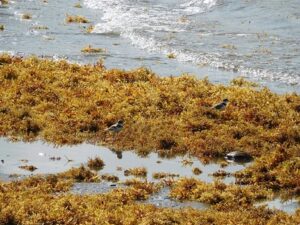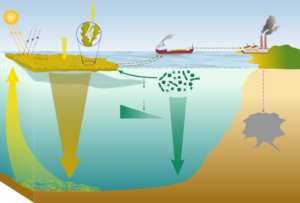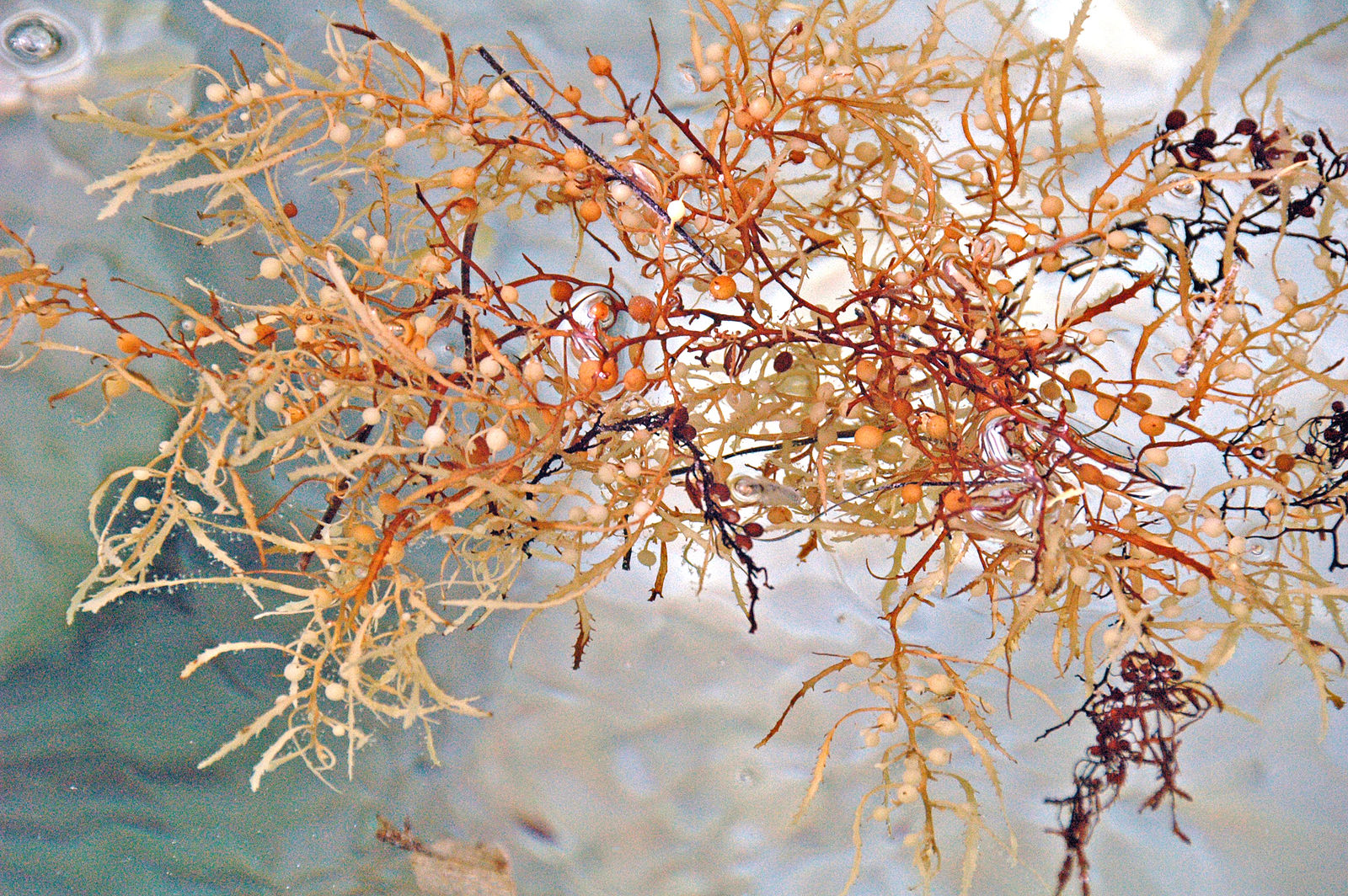Article: Bach LT, Tamsitt V, Gower J, Hurd CL, Raven JA, Boyd PW (2021) Testing the climate intervention potential of ocean afforestation using the Great Atlantic Sargassum Belt. Nat Commun 12:1–10. https://doi.org/10.1038/s41467-021-22837-2

Take a step on the beach this summer and you are bound to find seaweed, and lots of it. As much of a nuisance as seaweed can seem to the daily beachgoer, it actually may be one of our best chances at reducing the effects of climate change. Seaweed is a photosynthetic marine plant, which means that it converts carbon dioxide (CO2) from the atmosphere into oxygen (O2) for marine and land organisms (like humans!) to breath. Besides removing CO2 from the atmosphere, seaweed helps to reduce the effects of climate change in many other ways, including being harvested and transported to shore to be used for green energy. Seaweed also increases the reflection of sunlight at the sea surface, which reduces the amount of heat absorbed by the ocean. Large patches of seaweed also aid in creating habitats for marine animals in the open-ocean, such as crabs, shrimps, and fishes that otherwise would not be able to survive. This begs the question: can we use seaweed to save our planet from the effects of climate change? If we covered our oceans with more seaweed, would it actually help? A group of international researchers recently aimed to answer this question.

This concept of covering the oceans with seaweed, known as ocean afforestation or seaweed farming, has been proposed since the 1980’s. But, as you might imagine, it is difficult to implement this practice at a large enough scale to be successful. However, there is now a giant patch of seaweed located in the Atlantic Ocean, known as the Great Atlantic Sargassum Belt, that can help scientists begin to answer this question of whether seaweed could save the planet from the effects of climate change. This ‘belt’ of seaweed in the middle of the Atlantic Ocean is roughly 6100 km2 (or 3790 mi2) in area and can be detected and measured from space with satellites. Researchers used the information obtained from these satellites to estimate the amount of CO2 the seaweed belt removes from the atmosphere through photosynthesis. Several equations and estimates measured by other scientists were also used to fully quantify the results. The study concluded that ocean afforestation at the scale of the Great Atlantic Sargassum Belt would, at best, only offset 0.0001–0.001% of CO2 emissions projected by 2100. This low percentage is because there is much more to seaweed farming than simply generating large amounts of seaweed, with many other factors to consider. For example, while seaweed provides habitat for marine animals to live, it is also home to calcifying organisms, like corals and seashells, that produce CO2 when they grow their shells and calcify, thus putting CO2 back into the atmosphere. In addition, seaweed needs nutrients to grow, making less nutrients available for phytoplankton, another type of photosynthetic organism, thereby reducing the ability of phytoplankton to photosynthesize and remove CO2 from the atmosphere.
So, will seaweed save the planet from the effects of climate change? The answer is maybe. The conclusions from the scientists’ research suggests that CO2 removal with seaweed farming is possible, but that it is not as simple as it may initially appear. Therefore, while large scale projects like seaweed farming can help us reduce the effects of climate change, they cannot be our only solution for saving the planet. Reducing greenhouse gas emissions by limiting human dependence on fossil fuels will need to continue to be at the forefront of climate change mitigation now and into the future.
I am a plankton ecologist focused on the effects of rapid climate change on phytoplankton and zooplankton populations and physiology. The major pillars of my research explore how global climate change (1) has and will impact long-term trends in plankton population dynamics and (2) has affected plankton physiology and feeding ecology.
As a Postdoctoral fellow of the Rhode Island Consortium for Coastal Ecology, Assessment, Innovation, and Modeling (RI-CAIM) I am analyzing the multi-decadal long-term plankton time series in Narragansett Bay. By identifying underlying environmental parameters driving plankton community dynamics my work will facilitate efforts to forecast important ecological phenomena in the region.

